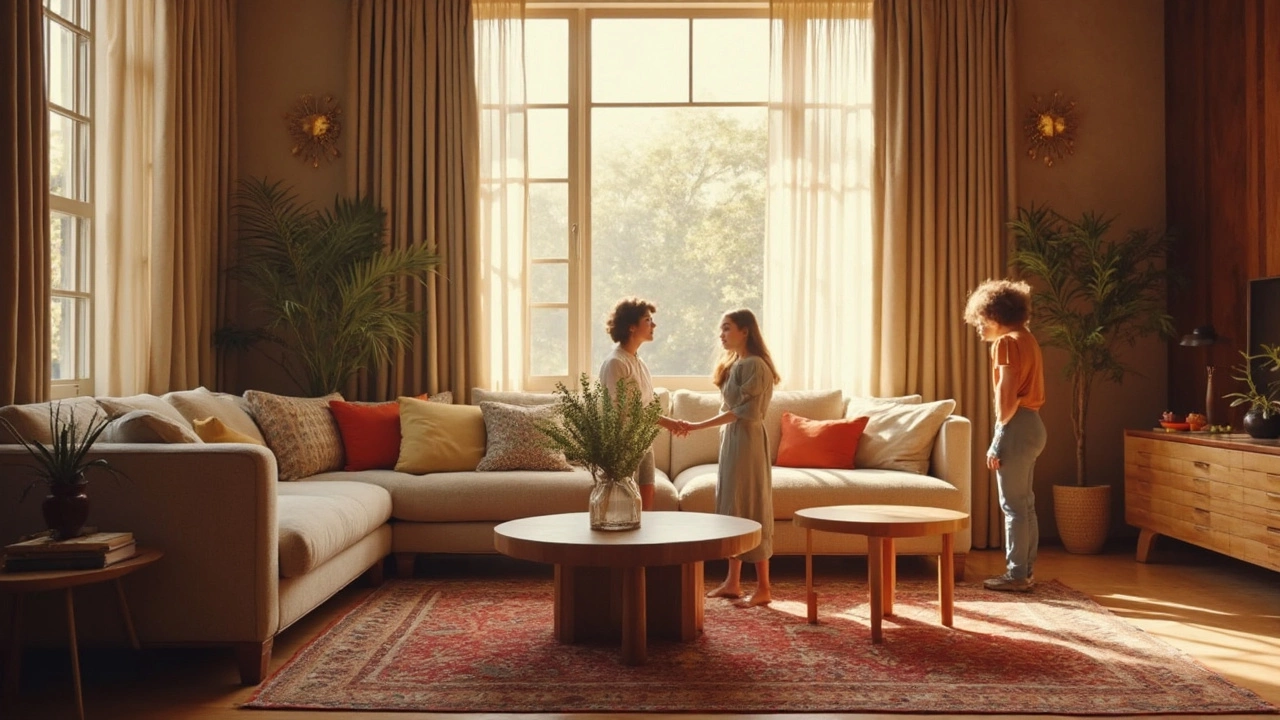Design Advice You Can Use Right Now
When you walk into a room and something feels off, it’s usually a simple mistake—wrong color, furniture that doesn’t fit, or a layout that blocks traffic. The good news? Fixing those issues takes just a few practical tweaks. Below you’ll find real‑world advice that works for sofas, coffee tables, TV stands and everything in between.
Pick the Right Sofa and Keep It From Sagging
We all love a plush couch, but a sagging seat kills comfort fast. Look for sofas with a hardwood frame, eight‑leg support and high‑density foam. If you can, test the cushion by sitting down; it should feel firm enough to bounce back when you stand up. A solid frame plus quality cushions = a couch that stays fresh for years.
Match Your Coffee Table and TV Stand Without Over‑Matching
People often wonder whether the coffee table should be the same color as the TV stand or the sofa. The secret is balance, not exact matching. Choose one piece as the anchor—say a dark walnut TV stand—then pick a coffee table in a lighter tone or a different material like glass. This creates visual interest without looking like a set.
Height matters too. A coffee table should sit about 1‑2 inches lower than the sofa arm, allowing easy reach for snacks and remotes. If you have a reclining sofa, make sure the table’s clearance accommodates the seat’s movement.
Use Rugs Wisely Under Your Coffee Table
A rug can tie a living room together, but it can also make a space feel cramped if it’s too small. Aim for a rug that extends at least 18 inches beyond the coffee table on every side. This gives you a defined area for foot traffic while keeping the rest of the floor visible.
When choosing a rug pattern, pick something that complements your sofa color rather than competes with it. Neutral tones with a subtle texture work best for busy rooms.
Color Trends: Choose a Sofa Shade That Stands the Test of Time
2025’s most popular couch colors are muted greens, warm greys and deep blues. These shades stay stylish even as décor trends shift. If you’re hesitant about a bold hue, start with accent pillows or a slipcover to test the vibe before committing.
Remember, a couch is a long‑term investment. A versatile color lets you swap out accessories seasonally without needing a new sofa.
Smart Storage: Fit a Couch in Small Spaces
Moving a sofa through a tight corner feels like a puzzle. Measure the door frame, hallway width and the turn radius of the couch. If the width of the couch plus a few inches exceeds the hallway, consider removing the legs or disassembling the frame if possible.
When storing a couch, keep it upright on a pallet and cover it with a breathable sheet. This prevents moisture build‑up and stops mold from forming in the fibers.
These bite‑size design tips are meant to be actionable today. Whether you’re buying a new sofa, rearranging your living room or just looking for a quick refresh, a few thoughtful changes can make your space feel brand new.
Coffee Table Height: Should It Be Higher Than Your Sofa?
Wondering if your coffee table should sit higher than your sofa? You're not alone. The answer isn’t as simple as you might think—it depends on comfort, style, and how you use the space. This article breaks down the pros, cons, and practical rules for choosing the right coffee table height. Get ready for easy-to-apply advice and real-life tips to nail your living room look.





